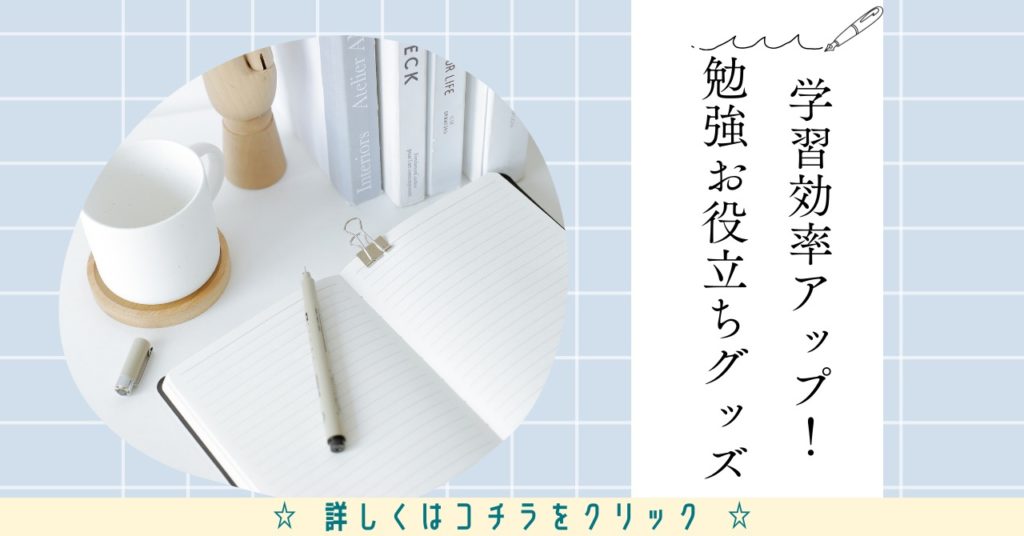啓林館 高1LANDMARK Lesson3 Part3の本文の日本語訳と重要箇所の解説です。
Lesson3-1, 3-2, 3-4の解説はこちらからご覧ください。
>高1LANDMARK Lesson3 Part1 本文和訳
>高1LANDMARK Lesson3 Part2 本文和訳
>高1LANDMARK Lesson3 Part4 本文和訳
- LANDMARK Lesson3 Part3 本文と日本語訳
- LANDMARK Lesson3 Part3 重要事項の解説
- Many schools in Japan have uniforms, but some do not.
- Over 10% of Japanese high schools do not have uniforms.
- At such schools, students wear their own clothes.
- There are also high schools that allow both uniforms and plain clothes.
- What about overseas?
- Germany, for example, has not traditionally required school uniforms.
- In the past, the government considered introducing school uniforms, but many people were against it.
- They worried that adopting school uniforms could limit their personal liberty.
- Uniforms are not required in most schools in the United States either.
- Instead, many schools have a dress code.
- It is a set of rules about clothing and appearance.
- However, there is a recent movement to adopt uniforms at schools in that country.
- Some people think that having school uniforms might prevent students from bullying others about fashion.
- Item: Footwear
- Item: Clothing Print
- Item: Jewelry or accessories
- LANDMARK Lesson3 Part3 まとめ
LANDMARK Lesson3 Part3 本文と日本語訳
Q1. Why were German people against school uiforms?
「なぜドイツ人は制服に反対したのですか?」
Q2. Why is there a recent movement to adopt school uniforms in the United States?
「なぜアメリカでは制服を採用する動きが最近あるのですか?」
Many schools in Japan have uniforms, but some do not.
「日本の多くの学校には制服がありますが,ない学校もあります。」
Over 10% of Japanese high schools do not have uniforms.
「日本の高校の10%以上は制服がないです。」
At such schools, students wear their own clothes.
「そのような学校では,生徒は自分の服を着ます。」
There are also high schools that allow both uniforms and plain clothes.
「制服と派手でない服の両方を許可する高校もあります。」
What about overseas?
「外国についてはどうでしょうか?」
Germany, for example, has not traditionally required school uniforms.
「例えばドイツは,伝統的に制服を必要としてきていません。」
In the past, the government considered introducing school uniforms, but many people were against it.
「昔,政府が制服を導入することを検討しましたが,多くの人がそれに反対しました。」
They worried that adopting school uniforms could limit their personal liberty.
「彼らは制服を採用することで個人の自由が制限されるかもしれないことを心配しました。」
Uniforms are not required in most schools in the United States either.
「アメリカのほとんどの学校でも制服は必要とされていません。」
Instead, many schools have a dress code.
「代わりに,多くの学校にはドレスコードがあります。」
It is a set of rules about clothing and appearance.
「それは服装と見た目についてのルールです。」
However, there is a recent movement to adopt uniforms at schools in that country.
「しかし,アメリカの学校では制服を採用する動きも最近はあります。」
Some people think that having school uniforms might prevent students from bullying others about fashion.
「制服があれば,生徒がファッションのことで他人をいじめることを防げるかもしれないと考える人もいます。」
Examples of Dress Code 「ドレスコードの例」
Item: Footwear 「項目:履き物」
Acceptable: Shoes with closed toes and heels
「好ましい:つま先とかかとが閉じている靴」
Not Acceptable: Shoes with open toes and heels such as flip-flops, backless shoes and sandals
「好ましくない:ビーチサンダルやかかとが開いた靴,サンダルなどのつま先やかかとが開いた靴」
Item: Clothing Print 「項目:服のプリント柄」
Acceptable: Clothing that is free of images such as alcohol, weapons, or tobacco
「好ましい:アルコールや武器,タバコなどの画像がない服」
Not Acceptable: Clothing that has printed images such as alcohol, weapons, or tobacco
「好ましくない:アルコールや武器,タバコなどの画像が印刷されている服」
Item: Jewelry or accessories 「項目:宝石やアクセサリー」
Acceptable: Jewelry or accessories that could not cause injury or be used as a weapon
「好ましい:怪我を引き起こさず,武器としても使われないであろう宝石やアクセサリー」
Not Acceptable: Jewelry or accessories that could cause injury or be used as a weapon
「好ましくない:怪我を引き起こし,武器としても使われる可能性がある宝石やアクセサリー」

LANDMARK Lesson3 Part3 重要事項の解説
Many schools in Japan have uniforms, but some do not.
“uniform”は「制服」という名詞です。
“some”は「一部の,いくつかの」という形容詞で,ここでは“schools”が省略されています。
“do not”の後ろも“have uniforms”が省略されていますね。
Over 10% of Japanese high schools do not have uniforms.
“over”は「~より多くの」という意味です。“more than~”も同じ意味があります。
ただし,人口や年月など元の数が大きい場合,つまりその数を含んでいるかが問題でない場合は「~以上」と訳してもOKです。
“of”は前置詞で,”A of B”の形で「BのA」というように後ろから前に訳します。
At such schools, students wear their own clothes.
“such”は「そのような」という形容詞ですね。
“wear”は「を着る」という動詞です。
“own”は「自身の」という形容詞で,“clothes”は「服」という名詞になります。
There are also high schools that allow both uniforms and plain clothes.
この文では「there構文」が使われていますね。
“also”は「また,さらに」といった副詞で,付け加える役割があります。色々な文で使うので必ず覚えましょう!
また,「主格の関係代名詞」の“that”も使われていて,“that allow both uniforms and plain clothes”が先行詞”high schools”を修飾しています。
“allow”は「を許す,許可する」という動詞で,“both A and B”は「AとBの両方」という重要表現です。
“plain”は「明らかな,質素な,地味な」という形容詞で,今回は「派手でない」と訳しました。
What about overseas?
“What about~?”は「~についてどう思いますか?」という表現になります。
“overseas”は「諸外国」といった名詞の意味もあります。
Germany, for example, has not traditionally required school uniforms.
この文では「現在完了」が使われていますね。
“for example”は「例えば」という重要表現です。
“traditionally”は「伝統的に」という副詞で,“require”は「を必要とする」という動詞になります。
In the past, the government considered introducing school uniforms, but many people were against it.
“in the past”は「昔は」という表現になります。
“government”は「政府」という名詞で,“consider”は「を考慮する,検討する」,“intrduce”は「を紹介する,導入する」という動詞です。
“against”は「~に反対して」という前置詞で,“it”は「政府が制服を導入することを検討したこと」を指しています。
They worried that adopting school uniforms could limit their personal liberty.
“They”は“many people”を指しています。
“worry”は「を心配する」,“adopt”は「を採用する」という動詞です。“worry”の後ろには「接続詞that」が使われていますね。
“limit”は「を制限する」という動詞で,“personal”は「個人の,個人的な」という形容詞,“liberty”は「自由」という名詞になります。
“could”は“can”の過去形で,「~することができた」の他に「~だろう」という推量の意味もあります。今回は推量で訳します。
Uniforms are not required in most schools in the United States either.
この文では「受動態」が使われています。
“most”は「ほとんどの,大半の」という形容詞で,“the United States”は「アメリカ」ですね。
“either”は否定文の文末に”, either”の形でくっつけることで,「~も」という意味になります。
Instead, many schools have a dress code.
“instead”は「代わりに」という副詞になります。
“dress code”はそのまま「ドレスコード」で,いわゆる「服装の規定」ですね。
It is a set of rules about clothing and appearance.
“It”は“a dress code”を指しています。
“a set of~”は「一式の~」といった意味ですが,ここでは特に訳さなくてもOKです。
“appearance”は「出現,登場,外見」といった名詞になります。
However, there is a recent movement to adopt uniforms at schools in that country.
この文では「there構文」が使われていますね。
“however”は「しかし」という意味の副詞になります。
同じ意味で“but”がありますが,こちらは接続詞なので品詞が異なります。“but”は“文A,but 文B”というように,2つの文を繋ぐ際に使います。
“文A. But 文B.”というように,“but”を文の先頭に置いて1文だけで完結させるのは原則NGとなります。
“recent”は「最近の」という形容詞で,“movement”は「運動,動き」という名詞です。
“to adopt”は「不定詞の形容詞的用法」で,直前の“a recent movement”を修飾しています。
Some people think that having school uniforms might prevent students from bullying others about fashion.
“think”の後ろには「接続詞that」が使われていますね。
“having”は「動名詞」で,“might”は「~かもしれない」という”may”よりも低い可能性を示す助動詞です。
ちなみに“might”は“may”の過去形でもありますが,今回のように現在形の文でも使えますよ。
“prevent A from B”は「AがBするのを防ぐ」という重要表現です。
“bully”は「をいじめる」という動詞で,ここでは前置詞“from”の後ろなので「動名詞」になっています。
“other”は「他者」,“fashion”は「ファッション」という名詞ですね。
Item: Footwear
“item”は「項目,品物」,“footwear”は「履き物」といった名詞です。
“acceptable”は「受け入れ可能な,好ましい」という形容詞になります。
“with”は前置詞で「~と一緒に」と訳すことが多いですが,必ずしも後ろに人が来るわけではありません。イメージとして「~とセットで」と覚えておきましょう。
訳し方としては「~を使って」「~で」など文脈に合わせて柔軟に変えてあげましょう。
“closed”は「過去分詞」で,直後の“toes and heels”を修飾しています。“toe”は「つま先」,“heel”は「かかと」ですね。
“such as~”は「~のような,~など」という重要表現です。
“flip-flops”は「ビーチサンダル」という名詞,“backless”は「後ろが開いた」という形容詞になります。
Item: Clothing Print
“Clothing Print”は「服のプリント柄」です。
“free of~”は「~がない」という表現で,“image”は「画像」,“alcohol”は「アルコール」,“weapon”は「武器」,“tobacco”は「タバコ」という名詞になります。
“Acceptable”の文の“that”は「主格の関係代名詞」で,“that is free of images such as alcohol, weapons, or tobacco”が先行詞”Clothing”を修飾しています。
“Not Acceptable”の文では「現在完了」が使われていますね。
Item: Jewelry or accessories
“jewelry”は「宝石」,“accessory”は「アクセサリー」です。
“could”は「~の可能性がある,~だろう」という推量の意味で訳します。
“cause”は「を引き起こす」という動詞で,“injury”は「怪我」という名詞ですね。
また,“Acceptable”の文の“that”は「主格の関係代名詞」で,“that could not cause injury or be used as a weapon”が先行詞”Jewelry or accessories”を修飾しています。
さらに“be used”の部分は「受動態」になっていますね。“as”は「~として」という前置詞です。
“Not Acceptable”の文も“that”は「主格の関係代名詞」で,“that could cause injury or be used as a weapon”が先行詞”Jewelry or accessories”を修飾しています。
LANDMARK Lesson3 Part3 まとめ
以上がLANDMARK Lesson3 Part3の日本語訳となります。
「関係代名詞」「分詞」をしっかり確認しておきましょう!
>高1LANDMARK Lesson3 Part1 本文和訳
>高1LANDMARK Lesson3 Part2 本文和訳
>高1LANDMARK Lesson3 Part4 本文和訳
何か分からない点や他に解説してほしい点があれば,お気軽にコメントしてください!



コメント